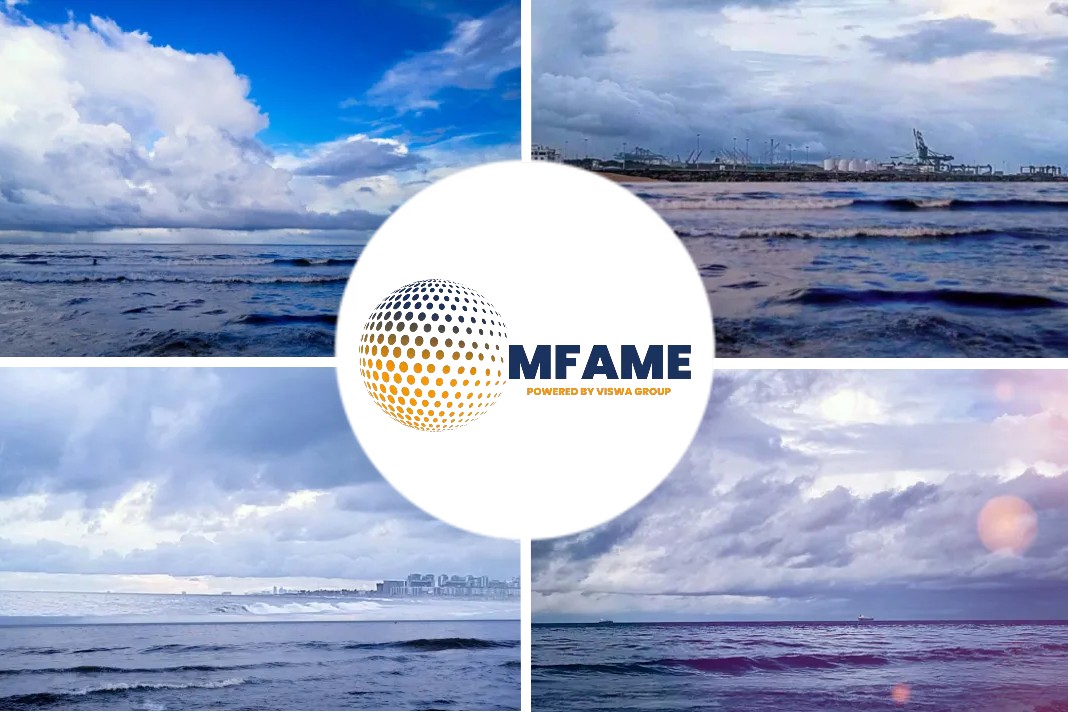Summary
On 12 July 2017, the Maltese registered container ship Kea Trader ran aground and stranded in position 22° 02.28′ S 168° 38.25′ E (Recif Durand) in the Pacific Ocean. At the time, the vessel was on a passage from Papeete, Tahiti, to Noumea, New Caledonia.
Kea Trader was using electronic chart display and information system (ECDIS) as the primary means of navigation and there were no paper charts on board. The officer of the watch (OOW) was monitoring a route displayed on the ECDIS. The zone of confidence (ZOC) of the electronic navigation chart (ENC) was ‘D’ and displayed a caution symbol and textual message “[t]his chart cannot be accurately referred to WGS 84 datum; see caution message”
A salvage company was contracted by the managers to salve the vessel and to prevent marine pollution. The salvors reported water ingress in the double bottom tanks, duct keel and cargo holds. Containers in the lower tiers of the hold were flooded and fuel oil was detected in one of the cargo hold. Pounded repetitively by heavy swell, Kea Trader’s engine-room bulkhead failed on 23 July. No oil pollution was reportedly observed in the sea. The vessel was declared a constructive total loss on 28 September.
On 12 November, the vessel was again struck by heavy weather, fracturing the hull in way of frame 92. Consequently, all personnel were evacuated from the vessel. On 04 December, Kea Trader broke her back approximately in the same position.
As a result of this investigation, the Marine Safety Investigation Unit (MSIU) has made recommendations to the managers of Kea Trader aimed at improving the standard of navigation of officers in their fleet using ECDIS as the primary means of navigation.
Findings
- The vessel navigated into shallow waters and remained stranded over Recif Durand.
- The revised route resulted in the track virtually passing over the isolated danger;
- The second mate’s observation of the isolated danger symbol appearing outside the starboard XTL due to an over-scaled ECDIS display, led to the incorrect assumption of safe water within the XTL corridor;
- An over-scale indication and vertical lines on the ECDIS indicating positional discrepancy of charted objects and loss of navigational information was missed by the OOW;
- No warnings or reference to the isolated danger was documented
- The ECDIS route check function had not been enabled;
- The master’s confidence in the second mate’s competency in the use of ECDIS, and application of planning procedures led him to believe that the route was safe and no independent route check was carried out;
- The detection vector had a width of 0.1 nm and 1.9 nm ahead and the detection sector was set at 45° over the same distance, effectively giving the OOW just about six minutes to respond to the safety alarm;
- Since the safety settings during the navigational watch hand over were neither checked nor logged in the deck logbook, none of the watchkeepers was aware of the actual safety settings on the ECDIS;
- The audible alarm was set to zero and remained switched off during the vessel’s passage to Noumea;
- The displayed symbol had not been interrogated;
- The ‘caution area’ message repeatedly displayed in the subsequent navigational watches was largely overlooked by the bridge team;
- The OOW earnestly believed that the vessel’s position displayed within the XTL was safe and required no action other than of adjusting the heading to regain the track;
- No evidence of the safety alarm – crossing safety contour, approaching underwater rock / obstruction / wreck or dangerous symbol – was found triggered on the ECDIS to alert or indicate to the OOW or lookout of imminent danger of grounding;
- The fact that the isolated danger symbol on the chart and the caution area message in the alarm panel remained displayed during successive navigational watches, may have suggested that there was no immediate and / or perceivable effects on the vessel or the voyage per se;
- The benefits of technology became a burden, hindering the skilful use of equipment and only mitigated by the de-activation of the safety barrier system;
- The bridge equipment familiarization forms were completed even though the deck officers needed further familiarization of on-board navigational equipment including ECDIS.
Recommendations
- Disseminate this safety investigation report on board its fleet and ensure that it is discussed during on board safety management meetings;
- Conduct a thorough navigational assessment of deck officers and assess the effectiveness of ECDIS training programme, on board familiarisation of bridge equipment, implementation of ECDIS planning procedures and monitoring of passage;
- Examine ECDIS anomaly with respect to non-activation of safety alarms
Did you subscribe for our daily newsletter?
It’s Free! Click here to Subscribe!
Source: Transport Malta

















